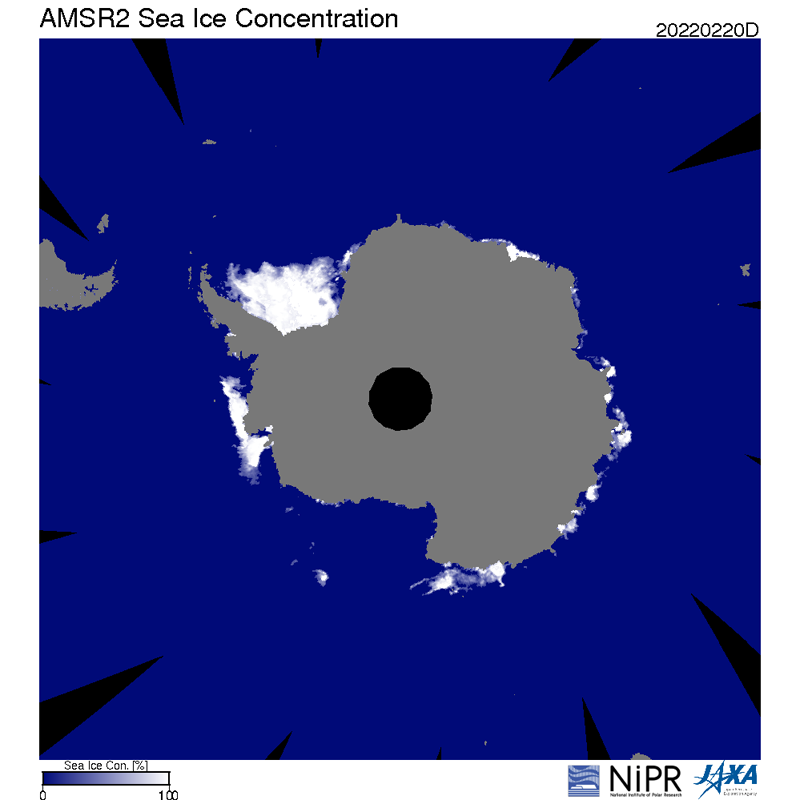

Meteorology and the Environment
2022.04.28 Thu
Antarctic Sea Ice Extent Lowest Ever Recorded
Japan Aerospace Exploration Agency (JAXA) and National Institute of Polar Research (NIPR) in Japan reported that the Antarctic sea ice extent was the smallest on February 20, 2022, since satellite observations began in 1978. The satellite observation data used in this analysis is available on the Arctic Data archive System (ADS) website.

On that day, the Antarctic sea ice extent became the lowest since satellite observations began. Credit: NIPR/JAXA
In the extremely cold Antarctic region, the sea freezes in the winter and thaws when it warms up, similar to the lakes. As you might expect, the extent of sea ice shows seasonal variations, increasing in winter and decreasing in summer. Contrary to expectations, however, recent global warming has not led directly to a decrease in sea ice extent in the Antarctic region. The reason is that the complex changes caused by global warming differ from region to region, with some areas experiencing increased sea ice production. It is essential to understand how sea ice extent changes over time in each part, not only in terms of economic activities such as route setting of the ocean but also in terms of understanding the effects of global warming.
JAXA and NIPR visualize temporal and spatial changes in the Antarctic and Arctic sea ice extent and publish the data on the Arctic Data archive System (ADS) website as one of the activities of Arctic Challenge for Sustainability II (ArCS II). These data are based on observations by JAXA’s Global Change Observation Mission – Water “SHIZUKU” (GCOM-W) (Figure). In the GCOM-W satellite observation data, the research group found the characteristic change in the sea ice extent data around the Antarctic Continent in February 2022, the summer season.

“Amazingly, the sea ice extent on February 20, 2022, was 2,128,000 km2, the smallest in over 40 years of observations,” said Project Professor Hironori Yabuki of NIPR. “This was discovered by method to compare long-term data since 1978, combining several satellite observations. It is also a minimal value (73.3%) compared to the average minimum extent of 2,902,000 km2 for each year from 2012 to 2021.”
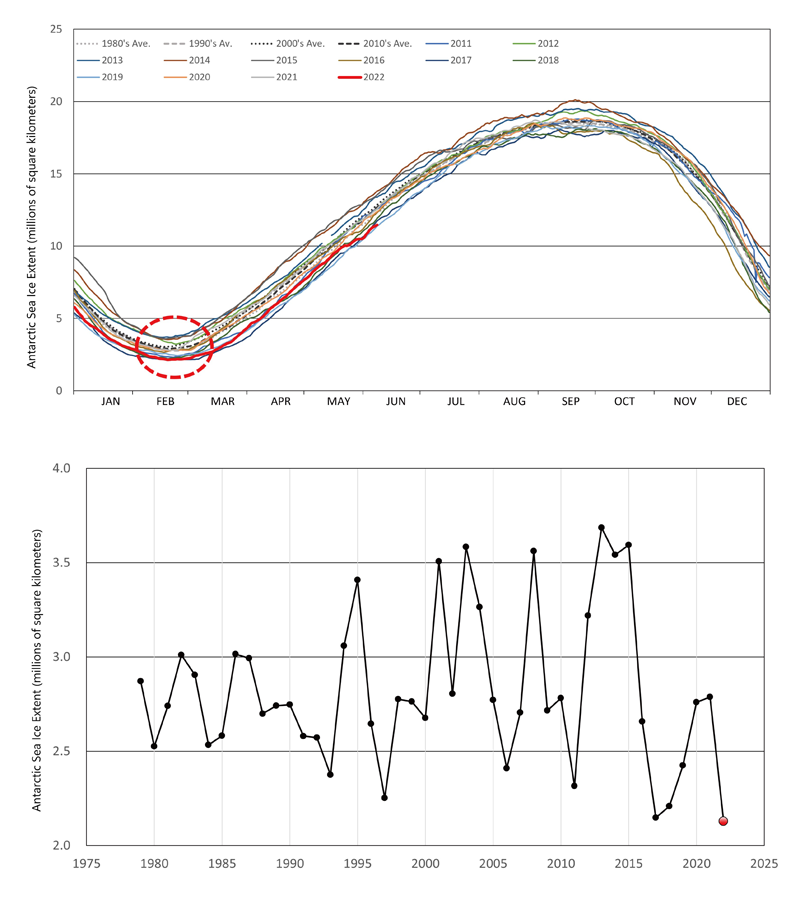
There was no significant decrease in sea ice extent until around September 2021, but a gradual downward trend was observed from around October, and the sea ice extent remained at about the third smallest on record for the period since the 2000s. Since the beginning of 2022, the sea ice extent remained relatively small, although no extreme decrease was seen, and the decreasing trend continued after February, reaching 2,128,000 km2 on February 20, 2022, the lowest value ever recorded.
Lower; Annual minimum of the Antarctic sea ice extent from 1979 to 2022.
Credit: NIPR/JAXA
“This time, we discovered the phenomenon of minimum sea ice extent based on observation data from the Advanced Microwave Scanning Radiometer 2 (AMSR2) onboard the GCOM-W. However, we know that sea ice’s role in the global environment varies depending on ice thickness, surface conditions, and drifting conditions. Currently, such information can only be obtained from field observations, but JAXA is developing a method to estimate such information from satellite observation data. For this development, it is necessary to accumulate information on how the Antarctic region’s actual state of sea ice is reflected in satellite observation figures. Therefore, field observations are becoming more critical,” said Project Professor Yabuki.
JAXA is also preparing to launch a new satellite, the Global Observing SATellite for Greenhouse gases and Water cycle (GOSAT-GW), which will carry AMSR3, the successor to AMSR2.
“This new method and satellite will allow combined analysis with more advanced sea ice coverage,” said Project Professor Yabuki.
Related Sites:
About ArCS II
The Arctic Challenge for Sustainability II (ArCS II) is Japanese national flagship project for Arctic research. Aiming to foster the realization of a sustainable society, the ArCS II project will promote advanced research to understand the current status and process of environmental changes in the Arctic and to improve meteorological and climate prediction in order to assess the impact of rapid environmental changes in the Arctic on human society, including Japan, as well as to implement the results of this research into society. They also provide domestic and international stakeholders with our scientific knowledge that will be a basis for legal and policy for the formation of international rules in the Arctic.
https://www.nipr.ac.jp/arcs2/e/about/
About ADS
The Arctic Data archive System (ADS) collects observation data and modeling products obtained by various Japanese research projects and gives researchers to access the results. By centrally managing a wide variety of Arctic observation data, we promote the use of data across multiple disciplines. Researchers use these integrated databases to clarify the mechanisms of environmental change in the atmosphere, ocean, land-surface and cryosphere. The ADS will provide an opportunity of collaboration between modelers and field scientists, can be expected.
https://ads.nipr.ac.jp/about-ads
National Institute of Polar Research (NIPR)
Antarctic Sea Ice Extent Lowest Ever Recorded (NIPR, News & Topics)
Antarctic sea ice extent lowest ever recorded (EurekAlert, NEWS RELEASE)
Search by Year
Search by Categories
Tags
-
#Earthquake
-
#Land
-
#Satellite Data
-
#Aerosol
-
#Public Health
-
#GCOM-C
-
#Sea
-
#Atmosphere
-
#Ice
-
#Today's Earth
-
#Flood
-
#Water Cycle
-
#AW3D
-
#G-Portal
-
#EarthCARE
-
#Volcano
-
#Agriculture
-
#Himawari
-
#GHG
-
#GPM
-
#GOSAT
-
#Simulation
-
#GCOM-W
-
#Drought
-
#Fire
-
#Forest
-
#Cooperation
-
#Precipitation
-
#Typhoon
-
#DPR
-
#NEXRA
-
#ALOS
-
#GSMaP
-
#Climate Change
-
#Carbon Cycle
-
#API
-
#Humanities Sociology
-
#AMSR
-
#Land Use Land Cover
-
#Environmental issues
-
#Quick Report
Related Resources
Meteorology and the Environment Related Articles
-
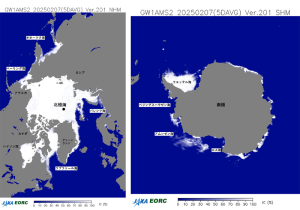 Meteorology and the Environment 2025.05.20 Tue February 2025: Global Sea Ice Extent Reaches its Lowest in the History of Satellite Observations
Meteorology and the Environment 2025.05.20 Tue February 2025: Global Sea Ice Extent Reaches its Lowest in the History of Satellite Observations -
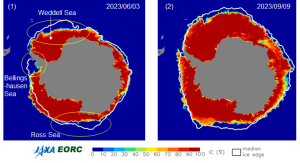 Meteorology and the Environment 2023.10.11 Wed Climate Change 2023 (2) : Antarctic Winter Sea Ice Extent Lowest Ever Recorded
Meteorology and the Environment 2023.10.11 Wed Climate Change 2023 (2) : Antarctic Winter Sea Ice Extent Lowest Ever Recorded -
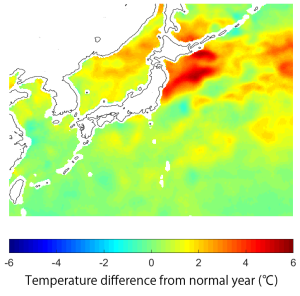 Meteorology and the Environment 2023.08.31 Thu Climate Change 2023 (1) : Sea Surface Temperature Rise and El Niño Event
Meteorology and the Environment 2023.08.31 Thu Climate Change 2023 (1) : Sea Surface Temperature Rise and El Niño Event -
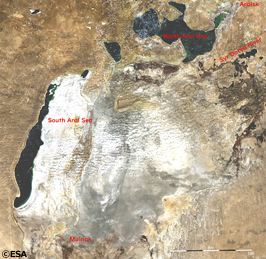 Meteorology and the Environment 2022.04.22 Fri Earth Day ~Caring about our Earth~
Meteorology and the Environment 2022.04.22 Fri Earth Day ~Caring about our Earth~
“The disappearing lake, and the appearing crater”

















